#Falaise pocket
Photo



Un canon automoteur Hummel et son équipage de la 12e Division blindée SS Hitlerjugend détruits dans le 'couloir de la mort' – Poche de Falaise – Bataille de Normandie – Août 1944
Photographe : George Rodger
©LIFE Magazine Archives
#WWII#Opération Overlord#Overlord#Bataille de Normandie#Battle of Normandy#Poche de Falaise#Falaise pocket#Armée allemande#German Army#Waffen-SS#12e Division blindée SS «Hitlerjugend»#12th SS Panzer Division Hitlerjugend#Victimes militaires#Killed in action#Le couloir de la mort#George Rodger#Normandie#Normandy#France#08/1944#1944
37 notes
·
View notes
Text
Photographs from the Battle of the Falaise Pocket - August 1944
Subscriber Content
Add content here that will only be visible to your subscribers.
Payment
Image: American forces in Chambois, France, during the Battle of the Falaise Pocket. August 1944.
Photographs from the Battle of the Falaise Pocket – August 1944
The Falaise Pocket or Battle of the Falaise Pocket occurred from August 12-21, 1944. It was the decisive engagement during the Battle of…

View On WordPress
#1940s#Allied Forces#Battle of Falaise Pocket#Battle of Normandy#German Army#German Defeat#German Waffen SS#World War II
0 notes
Text

Canadians walk through a deserted town during the battle of the Falaise pocket, August 1944.
28 notes
·
View notes
Photo

This Day in History: John Hawk’s Bravery in WWII
On this day in 1924, a hero is born. John “Bud” Hawk enlisted in the Army straight out of high school. He would later call himself a “citizen-soldier” who “came when I was called and did the best I could.”
His “best” in World War II led his country to award him the Medal of Honor.
Hawk’s heroism came in France, after the Allied landings in Normandy. By August, Germans were surrounded in an area known as the Falaise Pocket. They were trying to get out, even as Allied forces sought to keep them trapped.
By August 20, Sergeant Hawk was commanding a machine gun squad in this area. He was at the edge of an apple orchard. “Our mission simply was to stop everything we could from getting out through the gap,” Hawk later recounted. The story continues here: https://www.taraross.com/post/tdih-john-hawk-moh
#tdih#otd#this day in history#history#history blog#America#freedom#medal of honor#world war ii#wwii#memorial day#sharethehistory
49 notes
·
View notes
Text
Miniatures of the 3rd Fallschirmjager Division, as they would have appeared in the summer of 1944. This newly formed German paratrooper regiment was sent from Brest to reinforce the 352nd Division on the Elle river during the Normandy Breakout, and faced off with soldiers of the US 29th Infantry Division.
One Battalion CO in the 116th Regiment of the 29th remarked “those Germans are the best soldiers I ever saw. They’re smart and they dont know what the word ‘fear’ means. They come in and they keep coming until they get their job done or you kill ‘em.
After being almost completely annihilated in the Falaise Pocket, the unit was reformed and fought at Arnhem during Operation Market Garden, and later in the Hurtgen Forest. These troops would eventually surrender to American forces on the Ruhr river in April, 1945.




#history#miniatures#world war 2#world war ii#military history#band of brothers#historic miniatures#marketgarden#normandy#warlord games#ww2 history#ww2 germany#germanarmy
0 notes
Text
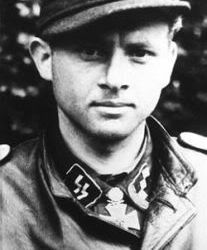
Legendary Panzer Ace Michael Wittmann
Michael Wittmann was a German Waffen-SS tank commander during the Second World War. He is known for his ambush of elements of the British 7th Armored Division during the Battle of Villers-Bocage on 13 June 1944.
Born: April 22, 1914, Vogelthal, Dietfurt, Germany
Died: August 8, 1944, Normandy, France
Place of burial: La Cambe German War Cemetery, La Cambe, France
Spouse: Hildegard Burmester (m. 1944–1944)
Parents: Johann Wittmann, Ursula Lachermayer
Awards: Knight's Cross with Oak Leaves and Swords
Battles/wars: World War II > Eastern Front > Operation Barbarossa;
Wittmann is credited with 135 tank kills. Hhe achieved 120 of these in 1943, operating a Tiger I tank on the Eastern Front.
Wittmann was killed on 8 August 1944 together with the crew of his Tiger tank by Allied units during the Battle of the Falaise Pocket. His remains were not found until 1983; they were later reinterred at La Cambe cemetery.
1 note
·
View note
Text
Pocket tanks wepons

The US First Army broke through the German defences near Saint-Lô and by the end of the third day had advanced 15 mi (24 km) south of its start line at several points. On 25 July the US First Army commander, Lieutenant-General Omar Bradley, began Operation Cobra. General Bernard Montgomery, the Allied ground forces commander, had planned a strategy of attracting German forces to the east end of the bridgehead against the British/Canadians, while the US First Army advanced down the west side of the Cotentin Peninsula to Avranches. Cherbourg was not captured by the VII US Corps until 27 June, and the German defence of Caen lasted until 20 July, when the southern districts were taken by the British/Canadians in Operation Goodwood and Operation Atlantic. Allied attacks to expand the bridgehead had rapidly defeated the initial German attempts to destroy the invasion force, but bad weather in the English Channel delayed the Allied build-up of supplies and reinforcements, while enabling the Germans to move troops and supplies with less interference from the Allied air forces. The Allied Liberation of Paris came a few days later, and on 30 August the remnants of Army Group B retreated across the Seine, completing Operation Overlord.Įarly Allied objectives in the wake of the D-Day invasion of German-occupied France included the deep water port of Cherbourg and the area surrounding the town of Caen. Many Germans escaped, but losses were huge. By the evening of 21 August, the pocket had been sealed, with est. The biggest was a corridor forced past the 1st Polish Armoured Division on Hill 262, a commanding position at the pocket mouth. Gaps were forced in the Allied lines by German counter-attacks. The Germans began to withdraw on 17 August, and on 19 August the Allies linked up in Chambois. On 8 August, Allied ground forces commander General Bernard Montgomery ordered the Allied armies to converge on the Falaise–Chambois area to envelop Army Group B, with the First US Army forming the southern arm, the British the base, and the Canadians the northern arm of the encirclement. Four depleted panzer divisions were insufficient to defeat the First US Army, driving the Germans deeper into the Allied envelopment. Hitler did not allow Army Group B commander Field Marshal Günther von Kluge to withdraw, instead ordering him to conduct Operation Lüttich, a counter-offensive at Mortain against the US. They forced the Germans back the orderly withdrawal eventually collapsed due to lack of fuel. Concurrently, the British/Canadian troops pushed south ( Operation Bluecoat) in an attempt to keep the German armour engaged. The Third Army quickly pushed south and then east, meeting little resistance. Patton was named the commanding officer of the newly recommissioned US Third Army-which included large segments of the force that had broken through the German lines. On 1 August, Lieutenant General George S. The German forces were overwhelmed and the Americans broke through. American forces pushed into the resulting gap. On 25 July thousands of American bombers carpet bombed a 6,000-metre corridor on the western end of the German lines around Saint-Lô in Operation Cobra. The German Army responded by sending a large portion of its armoured reserves to defend. It started with a British/ Canadian attack along the eastern line around Caen in Operation Goodwood on 18 July. The Allied armies developed a multi-stage operation. The German Army had used its available reserves (especially its armour reserves) to buttress the front lines around Caen, leaving few additional troops to create successive lines of defence. Allied forces continuously bombed and strafed German logistical lines, limiting the availability of fuel and ammunition. Allied air forces achieved air superiority up to 100 km behind enemy lines. However, the German Army expended irreplaceable resources defending the frontline. However, German resistance delayed this until after Caen's liberation. Similarly, US forces had expected to control Saint-Lô by the 7 June. British forces had expected to liberate Caen immediately after the invasion but this took nearly two months. The Allies had experienced strong resistance. Six weeks after the 6 June 1944 Allied invasion of Normandy, German forces were in turmoil. The battle resulted in the destruction of most of Army Group B west of the Seine, which opened the way to Paris and the Franco-German border. Allied forces formed a pocket around Falaise, Calvados, in which German Army Group B, with the 7th Army and the Fifth Panzer Army (formerly Panzergruppe West) were encircled by the Western Allies. The Falaise pocket or battle of the Falaise pocket ( German: Kessel von Falaise 12–21 August 1944) was the decisive engagement of the Battle of Normandy in the Second World War.

0 notes
Text

A group of rather young looking German pow’s captured in the Falaise pocket - August 1944
#world war two#1940s#worldwar2photos#history#ww2#wwii#ww2 history#wwii era#world war 2#wehrmacht#ww2history#pow#prisoner of war#1944#Falaise#Falaise pocket
38 notes
·
View notes
Text
Death Traps: The Survival of an American Armored Division in World War II :: Belton Y. Cooper
Death Traps: The Survival of an American Armored Division in World War II :: Belton Y. Cooper

View On WordPress
#0-8914-1670-6#1939 1945 war#american army#american army campaign#army history#battle bulge#books by belton y cooper#falaise pocket#first edition books#german tanks#main battle tanks#military history#siegfried line#soissons#stephen e ambrose#tank maintenance#tank repair#tank soldiers#tank warfare#united states armored divisions#world war 2#world war ii#world war two
0 notes
Photo
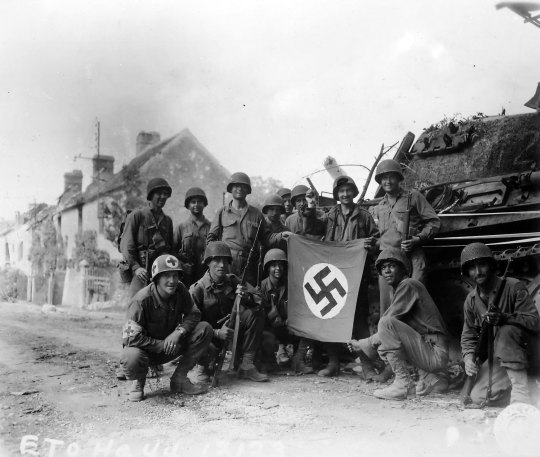
Soldats américains exhibant un drapeau nazi devant un char Panther – Bataille de Chambois – Poche de Falaise – Bataille de Normandie – Chambois – Orne – France – 20 août 1944
©National Archives and Records Administration - 112-SGA-44(12123)
#WWII#Opération Overlord#Overlord#Bataille de Normandie#Battle of Normandy#Poche de Falaise#Falaise pocket#Bataille de Chambois#Battle of Chambois#Armée américaine#American Army#Prises de guerre#Loot#Chambois#Orne#Normandie#Normandy#France#20/08/1944#08/1944#1944
28 notes
·
View notes
Text
Partageons mon rendez-vous lecture #30-2022 & critiques
Partageons mon rendez-vous lecture #30-2022 & critiques
Voici mes critiques littéraires sur Livres à profusion,
Le meurtre de la falaise d’Elizabeth George
Le meurtre de la falaise d’Elizabeth George – Editions Pocket
Une rentrée littéraire adolescent avec Emergence 7 de Vincent Mondiot et Enora Saby
Emergence 7 de Vincent Mondiot et Enora Saby – Editions Actes Sud Junior
Je commence une nouvelle série de J.R. Ward, Anges Déchus avec Convoitise
Anges…

View On WordPress
#LEMEURTREDELAFALAISE#LINLEY#actes sud junior#actes sud junior éditions#AVIS ELIZABETH GEORGE#AVIS EMERGENCE 7#AVIS EMERGENCE 7 DE ENORA SABY#AVIS EMERGENCE 7 DE VINCENT MONDIOT#AVIS EMERGENCE 7 DE VINCENT MONDIOT ET ENORA SABY#AVIS ENORA SABY#AVIS LE MEURTRE DE LA FALAISE#AVIS LE MEURTRE DE LA FALAISE D&039;ELIZABETH GEORGE#AVIS LINLEY ET HAVERS ELIZABETH GEORGE#avis romans Elizabeth George#AVIS ROMANS ENORA SABY#avis romans Vincent Mondiot#avis Vincent Mondiot#ÉTIQUETTESEMERGENCE7#éditions actes sud junior#éditions pocket#Elizabeth George#EMERGENCE 7 DE ENORA SABY#EMERGENCE 7 DE VINCENT MONDIOT#EMERGENCE 7 DE VINCENT MONDIOT ET ENORA SABY#LE MEURTRE DE LA FALAISE#LE MEURTRE DE LA FALAISE D&039;ELIZABETH GEORGE#LINLEY ET HAVERS#LINLEY ET HAVERS ELIZABETH GEORGE#pocket#pocket éditions
0 notes
Text
a collection of my favourite friendly-fire incidents, in no particular order
14–18 August, 1944: During the march to close the Falaise Pocket, the South Alberta regiment of the 4th Canadian Armoured Division sustained over 57 casualties from six different strafing attacks performed by RAF Spitfires. Despite the smoke columns from their destroyed vehicles, as well as the deployment of yellow signalling smoke -- the designated colour for friendly ground forces -- the strafing runs continued. One of the regimental officers in the 4th Divison flew off the fucking handle, and ordered his entire battery of self-propelled Crusader Anti-Aircraft tanks to fire on nearby RAF aircraft. [1]
2 January, 1966: An American Cessna O-1 Bird Dog flying over Bao Trai (now Hậu Nghĩa) was struck mid-air by indirect fire from an ANZAC howitzer battery, firing at a nearby NLF position. Like the fucking shells were falling, and this moron flew straight into the barrage and got hit. Mid-air. The tail of the plane separated from the airframe, and the pilot died on impact with the ground. [2]
10 May, 1940: A German Heinkel He-111 bomber took off from an airstrip to bomb the French city of Dijon during the Battle of France. However, due to some fucking insane calculation errors, they managed to fly back into Germany, and drop 69 bombs on the city of Freiburg instead, killing 57 German civilians. Of course the Nazis didn’t want to admit that their own city was bombed by the Luftwaffe, so Hitler blamed Churchill for “Coordinating terrorist attacks”. It’s also of note that the bombing occurred somewhere in the afternoon/evening, and visibility was good enough that the bomber crew identified landmarks on the ground -- they just mistook all of them for French ones. [3] [4]
June/July, 1801: During the Battle of Algeciras Bay, the two Spanish Santa-Ana class ships of the line, Real Carlos and San Hermenegildo, were sailing the Strait of Gibraltar. During foggy, nighttime conditions, the British HMS Superb sailed between the two Spanish ships. While attempting to pursue the Superb, both Spanish ships mistook each other for the Superb, and engaged with cannons. Both Spanish ships were sunk, and 1,700 sailors died. The Superb sailed away without a scratch. [5]
31 January, 1915: At the Battle of Bolimów, the German Ninth Army launched the first-ever gas attack of WWI on the Russian Second Army. However, upon the Ninth Army firing 18,000 bromine gas shells at Russian lines, it became clear that the Germans did not know how wind worked, and all of the gas blew backwards into German lines. There are no official casualty counts, but it’s suspected they were rather low due to the cold temperatures freezing the xylyl bromide in the gas. [6] [7]
14 April, 1942: In an RAF demonstration of “tactical airpower” in Wiltshire, went awry when a Hawker Hurricane fighter mistook the audience of the demonstration, for the target-dummies he was supposed to be hitting. The pilot strafed the observing crowd with his machineguns and killed 25; injured 71. Unfortunately, this was a rehearsal the day before Winston Churchill was supposed to be apart of that crowd. Fucking lmao. [8]
13 September, 1969: I don’t have a lot of details on this one, but apparently some British NCO stationed in Northern Ireland got shot in the face by one of his own men, while on the phone with his wife inside a British FOB. I can barely find anything more on this, but I will say that every account of FF I’ve found from the Troubles was dumbass Brits shooting each other unprompted, and I think that’s wonderful. [9]
1 January, 1945: Due to Allied airpower in France following the Battle of Normandy, and the dwindling fuel reserves of Nazi Germany, the Luftwaffe took a largely defensive posture during 1944/1945. However on New Years Day, 1945, the Luftwaffe made a final attempt at gaining air superiority in Operation Bodenplatte. Of course, they managed to completely fuck up this surprise attack, as they completely neglected to tell any German Anti-Aircraft crews about it. So at 08:30, German squadrons took off and were almost immediately shot down by their own anti-aircraft batteries. Roughly 300 aircraft were lost, and only a fraction of those were from scrambled Allied fighters. This is the largest single-day loss for the Luftwaffe in the entire war [10]
21-22 September, 1788: The whole Austro-Ottoman War was a shitshow, but the Battle of Karánsebes absolutely takes the cake; imagine a bar-fight with muskets. The Austrian army of about 100,000 men was making camp outside of Karánsebes, while a detachment of Hussars forded the Timiș River to scout for Ottoman soldiers. They didn’t run into any enemy during the patrol, but did run into a group of Romani merchants, who sold them schnapps. The Hussars start having a little party by the riverbank, which attracts the attention of a number of infantrymen from the main camp. The infantry began demanding to have some of the schnapps, which the hussars refused -- then it all goes fucking sideways. A shot rings out in the crowd; one of the hussars has been shot by an infantryman. The Hussars return fire, and then someone in the crowd yells “Turks!”. The crowd disperses, the majority heading back across the river, towards the camp, where the Corps Commander thought they were under attack by Turkish cavalry, and ordered all of his artillery to open fire on the hussars. Thinking they’re under attack in the middle of the night, the camp garrison starts firing at each other indiscriminately -- even better, since the Austrian army was comprised largely of mercenaries and multiethnic groups from the Balkans, none of them understood each other, so they couldn’t tell each other they were allies. Shit, even the guys speaking German were misunderstood; apparently when the Corps Commander called for everyone to halt, he was misheard as saying “allah”. Oh, and the archduke of Austria got thwacked off his horse and fell into the river, fuckin idiot. The entire army, thinking they were overrun with Turks, fled the town and went into a full-retreat. Two days later, the Ottomans found the massacre and just occupied the town with no resistance. Final estimates on the casualties were roughly 150 dead, 1,200 wounded and 563 missing. [11]
Cited Sources Below
1. Graves, Donald E. (1998). South Albertas: A Canadian Regiment at War. Toronto: Robin Brass Studio. ISBN 1-896941 -06-0.
2. Bob Breen, Bob (1988) First to Fight: Australian Diggers, NZ Kiwis and US Paratroopers in Vietnam, 1965–66, Allen and Unwin, Sydney; ISBN 0-89839-126-1
3. Gerd R. Ueberschär: Freiburg im Luftkrieg 1939–1945. Ploetz, Freiburg im Breisgau 1990, ISBN 978-3-87640-332-8
4. Big Deal, Der Spiegel 17/1982
5. Lettens, Jen. (2009, January 26). San Hermenegildo (+1801). wrecksite.Eu. https://www.wrecksite.eu/wreck.aspx?17094
6.Duffy, Michael (2005-12-22). "The Battle of Bolimov, 1915". First World War.com. Archived from the original on 3 September 2006. Retrieved 2006-08-15.
7. Smith, Gordon (December 2000). "Military Campaigns of World War 1—Russia". Naval-History.net. Archived from the original on 2006-08-13. Retrieved 2006-08-15.
8. Frampton, Will (11 April 2012). "Memorial to be unveiled to personnel killed in Imber friendly fire incident". Wiltshiretimes.co.uk. Retrieved 20 August 2016.
9. p.37, Operation Banner: The British Army in Northern Ireland 1969 to 2007, Nicholas Van der Bijl, Pen and Sword, 2009
10. Says:, S., Says:, S., Says:, M., Says:, C., Says:, B., Says:, T., . . . Says:, T. (2018, October 11). Fatal errors – the Worst friendly fire incidents of World War Two. Retrieved April 15, 2021, from https://militaryhistorynow.com/2012/09/19/fatal-errors-the-worst-friendly-fire-incidents-of-world-war-two/
11. Mayer, Matthew Z., "Joseph II and the campaign of 1788 against the Ottoman Turks," Master's thesis: McGill University (Montreal, Quebec, Canada), 1997 ; see especially pp. 61–62. Available at: McGill University (Montreal, Quebec, Canada)
474 notes
·
View notes
Text
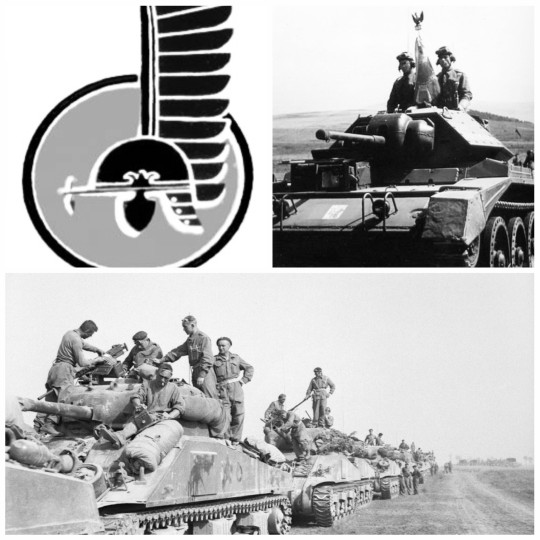
• Polish 1st Armoured Division
The Polish 1st Armoured Division was an armoured division formed as part of the Polish Armed Forces in the West during World War II.
After the fall of Poland and then France in 1940, the remaining Poles that had fought in both campaigns retreated with the British Army to the United Kingdom. Stationed in Scotland the Polish 1st Armoured Division was formed as part of the Polish I Corps under Wladyslaw Sikorski, which guarded approximately 200 kilometres of British coast in 1940-1941. The commander of the Division, General Stanislaw Maczek, was Poland’s premier mechanized commander, and many of his subordinate officers from the unit he commanded in 1939, the 10th Mechanized Brigade, had made their way to Britain with him. They were organized on the British Armoured Division model, equipped with British uniforms, weapons and tanks. They were initially equipped and trained on Crusader tanks but in late 1943 and early 1944 these were replaced with Sherman tanks and Cromwell tanks.
By the end of July 1944, the 1st Armoured had been transferred to Normandy, its final elements arriving on August 1st. The unit was attached to the First Canadian Army as part of the 21st Army Group. This may have been done to help in communication, as the vast majority of Poles did not speak English when they arrived in United Kingdom from 1940 onwards. The Division joined combat on August 8th, during Operation Totalize. It suffered serious casualties as a result of "friendly fire" from Allied aircraft, but achieved a victory against the Wehrmacht in the battles for Mont Ormel, and the town of Chambois. This series of offensive and defensive operations came to be known as the Battle of Falaise, in which a large number of German Army and SS divisions were trapped in the Falaise Pocket and subsequently destroyed. Maczek's division had the crucial role of closing the pocket at the escape route of the trapped German divisions, hence the fighting was desperate and the 2nd Polish Armoured Regiment, 24th Polish Lancers and 10th Dragoons, supported by the 8th and 9th Infantry Battalions, took the brunt of German attacks by units attempting to break free from the pocket. Surrounded and running out of ammunition, they withstood incessant attacks from multiple fleeing panzer divisions for 48 hours until they were relieved. The total losses of the division from August 7th when it entered combat until the end of the battle of Falaise on August 22nd were 446 killed, 1501 wounded, and 150 missing, or 2097 soldiers in total during about two weeks of fighting.
After the Allied armies broke out from Normandy, the Polish 1st Armoured Division pursued the Germans along the coast of the English Channel. It liberated, among others, the towns of Saint-Omer, Ypres, Oostnieuwkerke, Roeselare, Tielt, Ruislede, and Ghent. During Operation Pheasant a successful outflanking manoeuvre planned and performed by General Maczek allowed the liberation of the city of Breda without any civilian casualties. The Division spent the winter of 1944-1945 on the south bank of the river Rhine, guarding a sector around Moerdijk, Netherlands. In early 1945, it was transferred to the province of Overijssel and started to push with the Allies along the Dutch-German border, liberating the eastern parts of the provinces of Drenthe and Groningen including the towns of Emmen, Coevorden and Stadskanaal.
In April 1945, the 1st Armoured entered Germany in the area of Emsland. On May 6th, the Division seized the Kriegsmarine naval base in Wilhelmshaven, where General Maczek accepted the capitulation of the fortress, naval base, East Frisian Fleet and more than 10 infantry divisions. There the Division ended the war and, joined by the Polish 1st Independent Parachute Brigade, undertook occupation duties until it was disbanded in 1947; it, together with the many Polish displaced persons in the Western occupied territories, formed a Polish enclave at Haren in Germany, which was for a while known as "Maczków". The majority of its soldiers opted not to return to Poland, which fell under Soviet occupation, preferring instead to remain in exile. Many artefacts and memorabilia belonging to Maczek and the 1st Polish Armoured Division are on display in the Polish Institute and Sikorski Museum in London.
#second world war#world war 2#world war ii#military history#wwii#history#british history#polish history#tank history#tank warfare#tanks#battle of normandy
168 notes
·
View notes
Photo
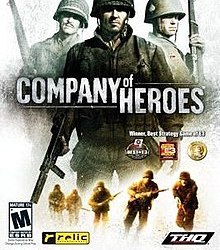
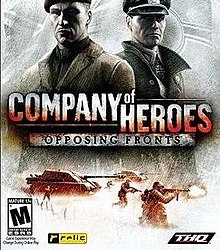

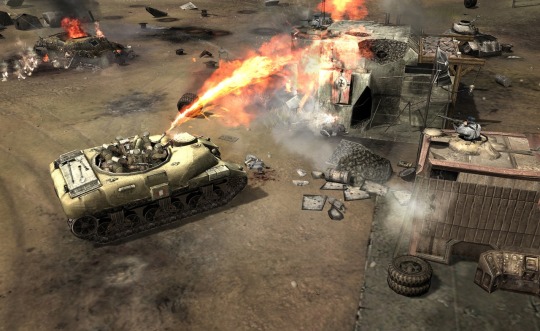
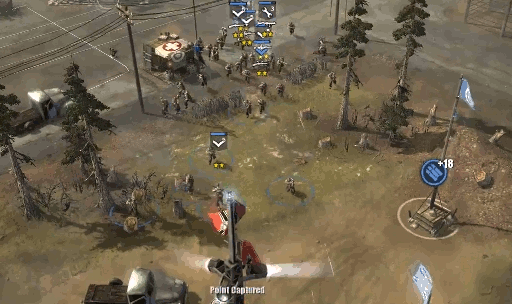
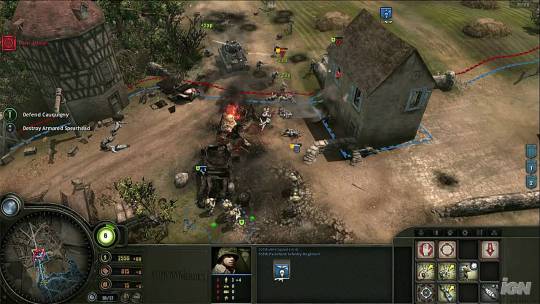

GGMan's Weekly Video Game Recommendation #5
I play a lot of games. Some, everyone has played. Others, not so much.
I'll be listing one game per week, that I have played and believe it deserves more attention. If you have already played it, then that's great! If you haven't, then you might as well.
The bigger the game, the longer the review due to the amount of content.
Name: Company of Heroes
Genre: Real-Time Strategy
Developer: Relic Entertainment
Publisher: THQ (Sega from 2013 till present)
Engine: Essense Engine
Length: Over 100 Hours
Singleplayer? Yes.
Multiplayer? Yes.
Release Date: September 12th, 2006
Platforms: PC
Reviews: Steam 9/10, GameSpot 9/10, Metacritic 93%, IGN 9.4/10
Now, where do I start? Company of Heroes shall forever be one of my all-time favourite games. It's not the oldest one I've played, but it was the very first one that introduced me to, back then, the rising industry of video games. You might recognize the franchise by its sequel that came out in 2013, which was also the last of the franchise as Relic was bought by SEGA, later that year, & THQ (not to be confused with THQ Nordic) filled for bankruptcy in 2012. Company of Heroes had managed to redefine the staple of real-time strategy games as it won numerous awards including two game-of-the-year titles from IGN & GameSpy.
The game takes place within the European Theatre of World War 2, as it covers not just individuals but, companies from specific armies and they're efforts throughout the Invasion of Normandy. From the heroic landings of Omaha Beach to the famous encirclement of the retreating German 7th Army within the Falaise Pocket, you control Able Company as a detachment of the U.S. 506th Infantry Regiment and basically re-live their experiences amongst some of the most pivotal battles of the war.
However, if American campaigns do not interest you, then you may be entertained by their standalone DLC's. Company of Heroes: Opposing Fronts allows you to take control of the British 2nd Army in their conquest for Caen, and the German Panzer Lehr Divison with their perspective during Operation: Market Garden. Company of Heroes: Tales of Valor does not follow after its predecessors with specific campaigns throughout the war, but instead, it allows you to re-live three episodes, from the war, depicting individual soldiers or groups at their finest hour; Tiger Ace SS-Hauptsturmführer Michael Wittman, the 82nd Airborne Division, & a unit of Waffen SS-Panzergrenadiers.
If you're a history fanatic, like me, then the premise of the game's story alone would already have you keen to try the game out for yourself. However, if you're not really a fan of World War 2 based video games, then maybe the gameplay would manage to catch your attention. Unlike your old-school strategy games such as Starcraft, Warcraft, & Age of Empires, Company of Heroes introduces the mechanics of, for example, economic gathering, sectorial management, dynamic cover, command powers, destructible environments, real-time physics (get that Fortnite sh*t outta here) and I could go on. Combat wise, you control one of four different armies, two from the allies & and two from the axis, which deploy squads of soldiers or individual tanks each with their own pros and cons. You use a combination of the multiple varieties of units available to you in whatever method of attack or defence that you want to do.
Do you want to charge over 70 units of US riflemen, armed with the BAR & sticky bombs against a division of German panthers? Of course, you can! Do you want to launch a rocket at a single British officer running for his life? Go ahead! This game lays down the groundwork through historical maps, battles, events, and basically hands over an immeasurable amount of freedom to choose how YOU want to play.
If you have completed the campaign without much of a challenge, then you may dive into the multiplayer as you, obviously, battle other players live to each their own choice of playstyle, and even against the game's computer-based AI which, depending on the chosen difficulty, it could either be a walk in the park or your complete and utter annihilation.
Graphics & Immersion? Who cares! As a game from 2006, using a (now) dead engine, this game takes the cake when it comes to the bare bones of the pixel by pixel details. For a real-time strategy game, you have realistic looking weapons, uniforms, tanks, maps, explosions, faces, voice acting ("EAGLES! SCREAMING ON JERRY!"), destructive action, rockets, more explosions, tiger tanks, cartoonish animations, physics, fires, airstrikes, buildings, and did I mention explosions?
In my honest opinion, Company of Heroes isn't just a game that deserves more attention because let's face it, the attention is already there from way back in 2006. This game is a must-play for any RTS fanatic out there.
System Req (Minimum)
OS: Windows XP / Windows Vista
Processor: 2.0 GHz Intel Pentium IV / AMD Athlon XP
Memory: 512MB
Graphics: NVIDIA GeForce 3 Series / ATI Radeon 9500
Sound: DirectX 9.0
Storage: 9GB (Steam says 1GB for some reason)
System Req (Recommended)
OS: Windows XP / Windows Vista / Windows 7-8 (10 has some initial compatibility issues from my experience)
Processor: 3.0 GHz Intel Pentium IV
Memory: 1GB
Graphics: NVIDIA GeForce 6800
Sound: DirectX 9.0
Storage: 9GB (Steam leaves this blank for some reason)
Side Note: On Steam, there's the normal version & the legacy version, which are given to you upon purchase. The legacy version is the most updated version of the game by Relic Entertainment but, access to multiplayer is extremely troublesome as it's not supported by Steam servers. Play the non-legacy version for little to no issues.
Price (USD): $16.18 (Main Game + Legacy Edition), $29.43 (Main Game + Legacy Edition + Both DLC's) [PC]
Disclaimer: this is a direct conversion of my local currency via Steam because Google is being dumb. In my opinion, it's worth the full price.
#company of heroes#coh#real time strategy#strategy#video game#pc#war#world war two#france#allies#axis#germans#review#video game review#original
7 notes
·
View notes
Text

© Magierowski // The Cold-blooded War Hero Who Fought Soviet and Nazi Attempts to Enslave Europe
Let me tell you the story of a brilliant soldier and an unwavering Polish patriot, who relentlessy chased Germans during World War II.
Stanislaw Maczek is largely appreciated by historians as one of the most gifted commanders of that period. Maczek spent most of his adulthood fighting Russians first, and Germans afterwards. He was bent on confronting both murderous, totalitarian regimes, which were bent on conquering the entire continent to enslave Europeans.
The Polish warrior emerged victorious, although he never had the chance to liberate his own homeland.
Eighty years ago, on September 1st, 1939, Poland was invaded by Nazi Germany. Seventeen days later we were attacked by Soviet Russia. The two dictators, Adolf Hitler and Joseph Stalin, had a secret plan to carve up central and eastern Europe and share the spoils. At the time Maczek commanded a mechanized brigade.
After the September 1938 campaign, he escaped Poland with thousands of Polish soldiers, who vowed to keep fighting the Germans wherever and whenever they could. The general ended up in Scotland, where the Polish army was being reconstructed. He had traveled through Morocco, Portugal and Gibraltar, disguised in…Arab dress.
Five years later he set foot in France again, this time leading the 1st Polish Armored Division in the Battle of Normandy. Payback time had arrived. As the division’s emblem was a black-winged hussar, it quickly earned the nickname the "Black Devils." They were feared by the Germans, and the Allies admired their courage and efficiency. Maczek's pioneering tactuics were a precursor of modern tank warfare: he preferred speed and mobility over mass firepower.
The 1st Armored Division played a decisive role in the famous Battle of the Falaise Pocket, in 1944, in which the Allies encircled two German armies. The British general Montgomery, supreme commander of the ground forces in Operation Overlord, wrote after the war: "Under Falaise we locked the Germans like they were in a bottle, and the Polish Armored Division was the cork in this bottle."
In the autumn of 1944 the Black Devils continued their raids into Belgium, liberating Ypres and Ghent. Then they stormed Breda in the southern Netherlands, reconquering the town without any civilian casualties. Maczek reportedly insisted that no bomber aircraft be deployed in the assault, since he wished to preserve the unique architecture of the old city.
Breda’s citizens welcomed the liberators enthusiastically, displaying thank-you notes, written in Polish, in their windows. Years later residents of the city applied for Maczek to be granted honorary citizenship of the Kingdom of the Netherlands. The petition was signed by 40,000 people.
The war ended. Maczek returned to Britain, his division was demobilized.
Then they came again. The Soviets.
First they liberated Poland from Nazi occupation, but soon they imposed their own bloody rule. As the communists hated those who had fought in the West, many soldiers who chose to go back to Poland immediately after Germany’s surrender were swiftly thrown into jail or summarily executed. Others were eventually barred from re-entering Poland.
Maczek, an honorary Dutch citizen, was stripped of his Polish citizenship. Since he was also deprived of retirement benefits, he had to work as a bartender in restaurants owned by Polish immigrants in Scotland. This time it was the Cold War which exacted its appalling toll.
In 1989, after the collapse of communism, the wartime lionheart was rehabilitated. The Polish government restored his citizenship. Five years later he was awarded the Order of the White Eagle, the highest Polish distinction.
Stanislaw Maczek died in Edinburgh in December 1994, at the age of 102. At his prior request he was buried in the Polish war cemetery in Breda, along with his brothers-in-arms.
He once said: "The Polish soldier fights for the freedom of all nations. But he dies only for Poland."
54 notes
·
View notes
Text
A Bridge Too Far: Operation Market Garden 75 years on
In May 1945 it was the Russians who hoisted their flag over the ruins of the Reichstag building in Berlin. In this way World War Two, in Europe, was signalled as being effectively over. However, the troops who captured Berlin could easily have been British or American, if events around a small town in Holland had turned out differently.
Operation Market Garden, launched in September 1944, was an unsuccessful Allied offensive mainly, fought in the Netherlands. It was the largest airborne operation in history up to that time.
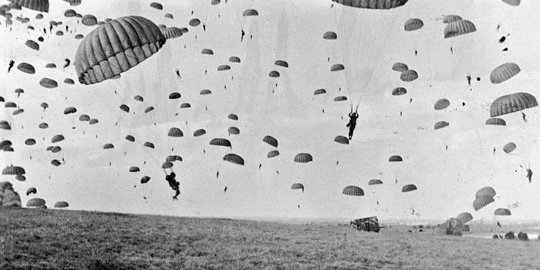
The operation was a daring one and it was the brainchild of the British General Bernard Montgomery. This operation was even the subject of the 1977 star studded movie A Bridge Too Far directed by Richard Attenborough. Montgomery intended the airborne offensive to allow the allies to break into the German heartland and to end the war, quickly. However, this was not the case, the allied offensive was to prove to be a costly failure and may have even delayed their victory in Europe.
Why did this operation fail? Was it Montgomery's over-optimistic planning, poor strategy, poor leadership, German resistance or the terrain?

Background
The Allies had landed in Normandy on the 6th of June 1944. After establishing several beach heads in Normandy, the Allies managed to push forward into the Normandy countryside. The Germans initially managed to slow the Allies advance, however, a brilliant piece of Allied strategy, resulted in the encirclement of a large part of the German army, in the Falaise Pocket.
The combined Anglo-American divisions inflicted huge losses on the Germans. The German army was forced into a headlong retreat. Paris was soon retaken by the Allies. The German army was practically forced out of France and retreated towards Alsace-Lorraine and Belgium. It seemed to many that the Allies were on the verge of invading German and some even spoke optimistically of ending the war by Christmas.
However, in truth, the Allied successes had brought its own problems. The Allies supply lines were overstretched and this was slowing down the Americans and British in particular, the shortage of oil meant that Patton’s armored divisions had to halt their advance. This was to prove crucial and it allowed the Germans to regroup in the west, when it appeared that they would disintegrate, leading to the end of the war.
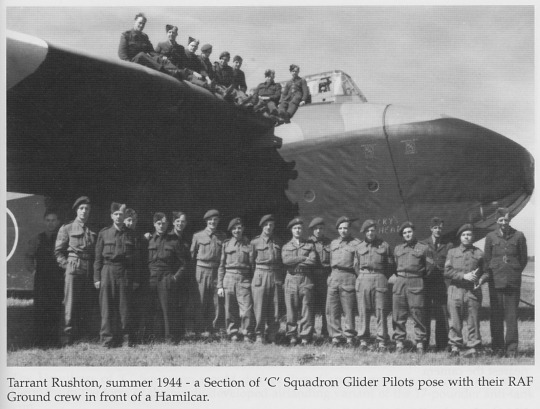
Reasons for Market Garden
By the Autumn of 1944, it was apparent to the Allied High Command that the Germans had managed to retrieve the situation and would offer stiff resistance to any future offensive. In August 1944, a British assault failed to take the deep water port of Antwerp and had allowed some 80,000 German troops from Scheldt Estuary.
This became known as the ‘Great Mistake’ and was perhaps one of the biggest in the entire war. The Allied high command was reluctant to attack the Germans from eastern France, as the German government had constructed a massive line of defenses, consisting of fortresses, to protect their western border, this was known as the Siegfried Line. The British and the Americans had to go through the Low Countries to invade Germany and end the war.
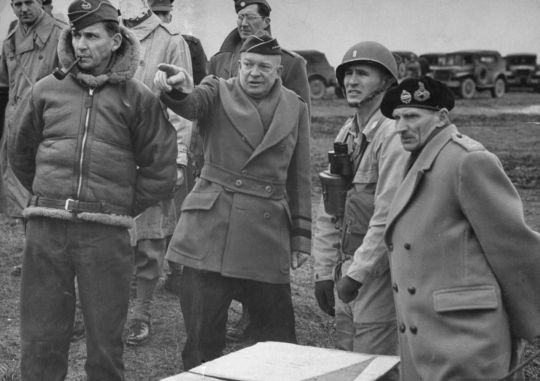
The Allies believed that they would need an innovative plan to break the German frontline in the Low Countries and in Alsace-Lorraine. General Eisenhower and other leaders turned their attention to the Low Countries. It offered them ports which could be used to re-supply the Allied divisions, who still were reliant on the Normandy ports for their supplies.
The more forward thinking of the allied strategists became concerned about the Rhine. This river would form a formidable natural barrier to any Allied advance but if they liberated the Low Countries it would allow them to cross the Rhine and then to cross into Northern Germany and then onto Berlin.
The American and the British governments became increasingly eager to end the War in Europe and they wanted to turn their attention to the Pacific War. Then the western allies believed that they were in a race to Berlin with the Soviet Army and they did not want the Red Army to capture all Germany and to turn it into a client state of Moscow.
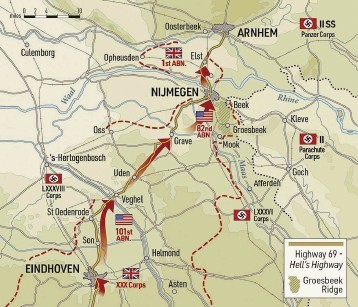
Montgomery's Strategy
The allies needed to break the Germans resistance and cross the Rhine in the Low Countries. General Bernard Montgomery, the hero of the British victory at EL Alamein, proposed a daring plan. Field Marshal Montgomery’s goal, as recounted in his memoirs was to invade Germany by securing the bridges over the Lower Rhine in the Netherlands.
This idea had several advantages such as by-passing the Siegfried Line. Montgomery wanted an airborne assault in the Netherlands to secure key bridges over the Lower Rhine. This would allow the Allies to enter into the Northern German plains, where there were no natural barriers, to their advance to Berlin.
Montgomery’s plan was initially more ambitious and it was rejected by General Eisenhower. Angered by Eisenhower's reluctance, Montgomery flew to Brussels that afternoon to meet him. Montgomery requested that Eisenhower's Chief Administrative Officer leave the meeting, while insisting that his own should remain. He then tore a file of Eisenhower's messages to shreds in front of him, argued for a concentrated northern thrust, and demanding priority in supplies. So fierce and unrestrained was Montgomery's language that Eisenhower suddenly reached out, patted Montgomery's knee and told him, "Steady, Monty! You can't talk to me like that. I'm your boss."

Eisenhower stated his belief that advance on a broad front would soon provoke German forces to collapse. He told Montgomery why a "single thrust" toward Berlin was not going to be accepted.
“What you're proposing is this – if I give you all the supplies you want, you could go straight to Berlin – right straight (500 miles) to Berlin? Monty, you're nuts. You can't do it. What the hell[?] ... If you try a long column like that in a single thrust you'd have to throw off division after division to protect your flanks from attack.”
Nevertheless, Eisenhower consented to Operation Market Garden after Montgomery scaled back his plans in response to Eisenhower’s criticism.
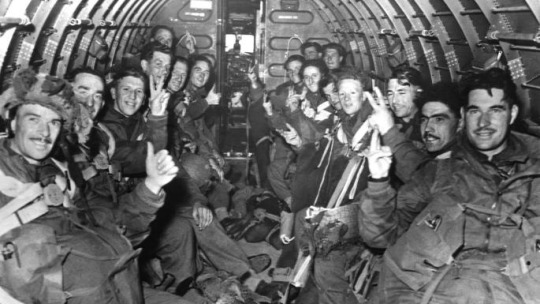
Montgomery proposed the following:
Airborne units would be dropped behind the German lines to secure the bridges over the Meuse and the two tributaries of the Rhine. The airborne units would hold the bridges until the British ground forces arrived. Montgomery believed that not only would this airborne operation succeed in securing bridges over the Rhine, but result in the retreat of German Divisions into Germany.
The Allied High Command agreed to the plan. Montgomery staked his reputation on the strategy and was backed by Churchill. The offensive was to be called Market Garden.
The 'Market' part of the operation involved the airborne aspect of the operation. The operation would involve four airborne divisions. The paratroopers would land in the area by gliders or they would parachute into the target zones.
Market Garden was to be executed by 41.628 English, American and Polish airborne troop and they would also be supplied with some light artillery. There were American, British and Polish units involved in the massive airdrops.
The ‘Garden’ part of the plan would involve several British Armored Divisions moving into the Netherlands to link up with the paratroopers and to defend the bridges from any German counterattack.
According to Montgomery, for the strategy to have worked it was dependent on two things, the quick capture of all the bridges by the Allies and the ground forces linking with the paratroopers, within days.
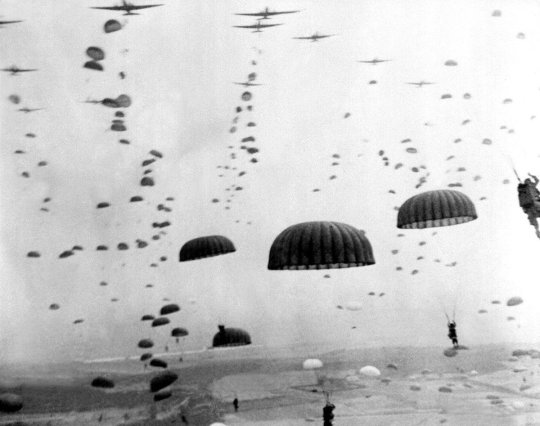
The Battle
Operation Market Garden began on the 17th of September 1944. It was a coordinated action by American, British a Polish Airborne and mainly British forces. The operation began with heavy air raids, in order to weaken any resistance. The paratroopers began landing at 13.00hrs around targets in the Netherlands, chiefly Eindhoven, Arnhem and Nijmegen. The paratroopers had the advantage of surprise and they achieved their objectives. The Germans had been taken completely by surprise.
The initial phase of the operation was a total success. It had been feared that the Germans would blow up the bridges and this would mean that the plan would have to be aborted. The rapid capture of the bridges meant that the ground forces would be able to reach the landing zones, and support the paratroopers.
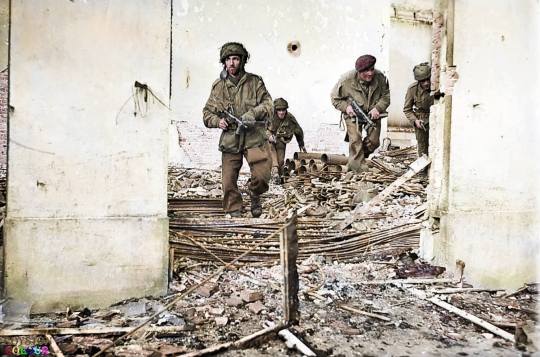
The British ground forces fought their way to Nijmegen and captured the city, after some fierce fighting. One after another the bridges were captured by the British Ground forces. The operation appeared to be going to plan despite heavier than anticipated German resistance.
The most important bridge was Arnhem, this was the most strategically significant bridge and it had to be seized by the ground forces if Market Garden was to succeed in its objectives. The British paratroopers had captured the bridge but they soon came under fierce attack from units of the crack 9th and 10th SS Panzer Divisions. The SS had armor and tanks and they pounded the British paratroopers mercilessly.
The British paratroopers soon found themselves surrounded as the SS had encircled them. The lightly armed British soldiers fought bravely, but they could not hold out for long. An elite British unit, the Irish Guards, was fighting its way forward to help the airborne troops.
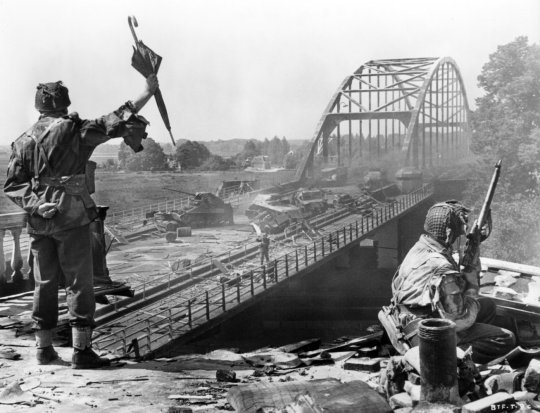
However, because of the terrain, they had to fight their way up to Arnhem on a single road and they were constantly attacked. This road came to be known as the Highway to Hell. The tanks of the Guards could not leave the narrow road as the ground was very marshy and much of it was bogland. As the Irish Guards made their way to Arnhem they were easily picked off by the Germans, who attacked them from the cover of woodland.
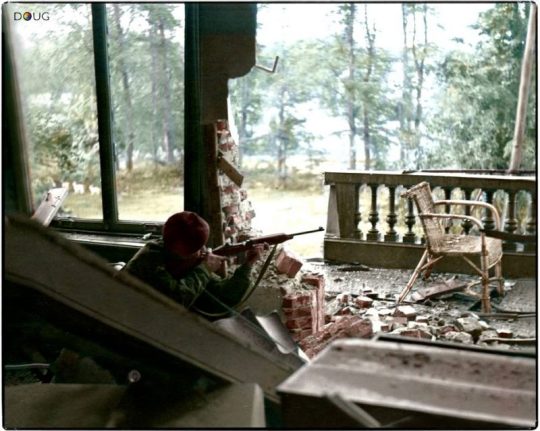
Eventually, such was the ferocity of the German resistance that the British came to a halt. The paratroopers at Arnhem were isolated and cut-off and were forced to surrender. Operation Market Garden had achieved all of its objectives, except the most important one, the capture of the Bridge at Arnhem.
Montgomery’s Optimistic Planning
Even before the start of the operation, many feared that Montgomery’s plan was too optimistic. The commander of the Polish airborne unit declared that the plan was flawed but went with it anyway.
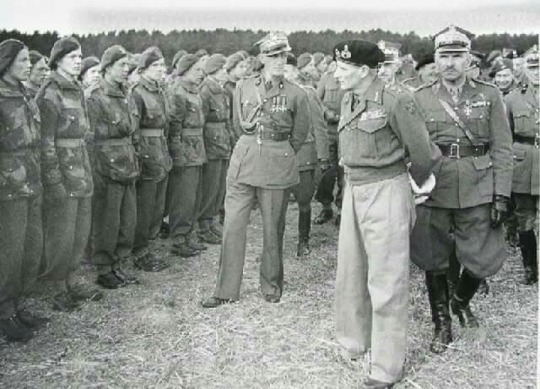
No one really knows who on Montgomery’s senior staff actually famously stated that the prime objective of the offensive the Arnhem Bridge was ‘a bridge too far.’ Whoever said it, he meant that Montgomery’s aims were simply too ambitious and that he was asking too much of his men.

Montgomery also assumed that the paratroop unit could retain their landing zones and the bridges for a given period of time. Paratroops were only lightly armed and without support from ground troops and tanks they could not hold out for long.
Lt-General Sir Frederick ‘Boy’ Browning - considered to be the father of the British Airborne forces and who comanded the 1st Airborne Corps - was wrong to believe that his airborne troops could resist assault from ground troops supported by armour for several days and did nothing to question Monty’s assumptions but reinforce them.
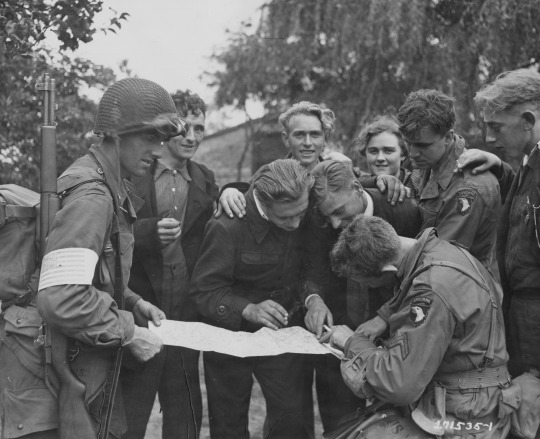
Crucially Montgomery and most of his senior staff failed to understand the terrain that he expected his men to fight in. The roads in the Netherlands were narrow and that the ground around them was unsuitable for armour. This was a fundamental error - Montgomery had simply assumed that his tanks could make their way rapidly to the landing zones, by using only the roads.
During the battle, the roads became death traps for many British units and they soon became clogged with burned-out tanks and vehicles and this critically delayed the ground forces coming to the support of the paratroopers in Arnhem, in particular. Perhaps the biggest failing of the Montgomery plan was that it assumed that the Germans had been decisively beaten and that any counter-attack that they could launch in the area would be limited.
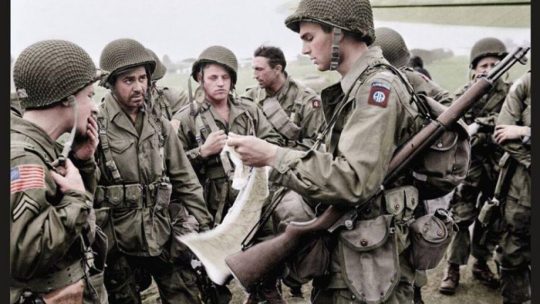
German Counter-attack
General Walter Model with SS-Brigadeführer Heinz Harmel The Germans had been driven back some two hundred miles in a matter of weeks. The British and the Americans dominated the skies and constantly harassed the Germans. Here the bravery and courage of the allied forces - 82nd and the 101st Airborne forces comes to mind as well as the Irish Guards.
The roads had become very unsafe for the Germans and they had also come under attack from the local resistance movements. The Germans had lost some 90,000 killed or wounded during the summer of 1944 and a further 200,000 had been taken prisoner or missing in action.

However, after the failure of the British army to encircle the German army in the Scheldt Estuary, allowed the Germans time to regroup in the Netherlands. The German front had begun to stabilise. They were also ably led by the very experienced General Walter Model. He also received some reinforcements in the form of the remaining units of the 9th and 10th SS Panzer Divisions.
Unfortunately, for the Allies, especially the British, the SS units were positioned in Arnhem. This was not merely bad luck, but due to good German intelligence.
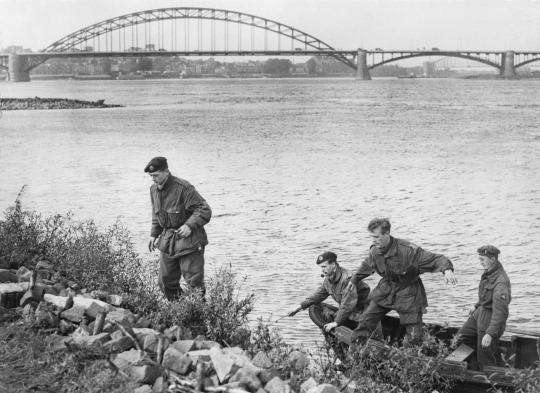
Intelligence Failure
The Germans had anticipated that there would be an offensive launched with the objective of seizing Arnhem, Wesel, and Nijmegen. A senior intelligence officer argued that the British and the American would use airborne troops. However, he did not predict where the assault would be. Nevertheless, German intelligence was able to provide the High Command with the information they needed to prepare for any planned Allied attack. The German General Model heeded his intelligence officers and this was to prove decisive.

The British had excellent intelligence. They had reliable information on the movements of the Germans, from the Dutch Resistance and they could also employ aerial reconnaissance planes to obtain photographic intelligence. One reconnaissance mission was able to provide images that seemed to show German forces in the Arnhem area. This was confirmed by information from the local resistance. This was compelling proof that the Germans had significant forces and that any air assault on the region, would be a great risk.
It was Lt.Gen Frederick Browning who downplayed evidence brought to him by his intelligence officer, Major Brian Urquhart, that the 9th SS Panzer Division Hohenstaufen and the 10th SS Panzer Division Frundsberg were in the Arnhem area, but was not as confident as he led his subordinates to believe.
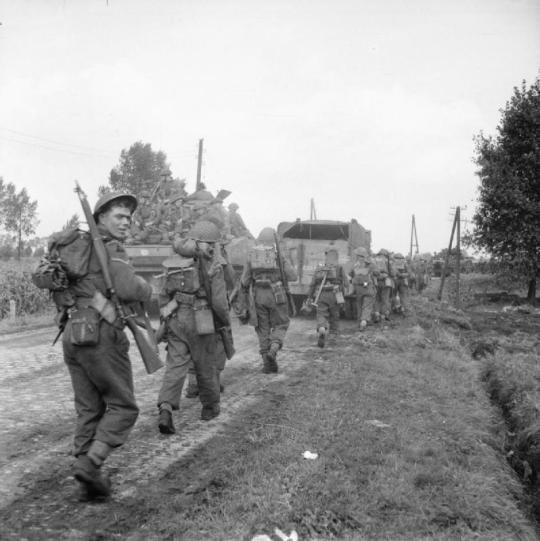
According to Major-General Urquhart, GOC of the British 1st Airborne Division, when informed that his airborne troops would have to hold the bridge for two days, Browning responded that they could hold it for four, but later claimed to Urquhart that he had added: "But I think we might be going a bridge too far."
When Major Brian Urquhart tried to report this up the chain of command to Montgomery, he was not believed. When Major Urquhart tried to persuade Browning and Montgomery that there was a large build-up of German forces near Arnhem, he was relieved of his command and rumours spread that he had a nervous breakdown. Montgomery’s refusal to heed intelligence was to result in a near disaster for the British. It appears that the he and his senior generals refused to countenance anything that contradicted Monty’s own views as he was utterly convinced of the brilliance of his plans for Market Garden and his own infallibility.

Consequences of Market Garden
The operation was not a total failure as it did lead to the liberation of large areas of southern Netherlands and gained hold of several strategic bridges. However, it failed to secure the key bridge at Arnhem, that would have allowed the Allies to cross the Rhine.
Quite simply, the failure at Arnhem meant that any planned invasion of Germany had to be delayed.
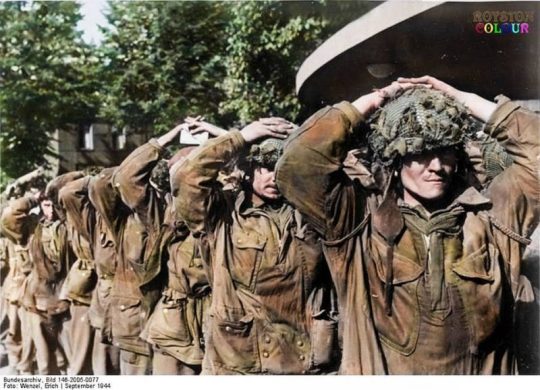
The Germans, although they had lost ground, were able to establish a strong defensive line. In total, the Allies had suffered some 15,000 casualties and had many thousands more taken prisoner. The Germans had also lost equipment and vehicles that they could ill-afford to use.
An unintended consequence of the offensive was a serious famine in the Netherlands. The Dutch railways stopped during the battle, to stop German reinforcements from getting to the front line. In revenge, the Germans forbade the transportation of food, by train and in the following winter there were serious food shortages throughout the Netherland’s and close to 20,000 died of starvation or malnutrition.

Conclusion: so near and yet so far
Operation Market Garden was a tactical defeat for the Allies, as it failed to achieve all its objectives. It failed to secure the key bridge at Arnhem and this meant that they were halted at the Rhine. This probably delayed the eventual Allied victory in western Europe.
The operation failed because of a failure in planning, intelligence, and a lack of understanding of the nature of the terrain.
While every previous major Allied operation had taken months if not years of meticulous planning, Market Garden was proposed in haste to try to take advantage of what appeared to be the German army retreating in disarray.
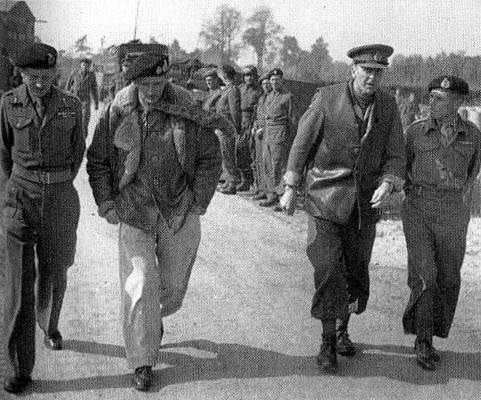
And the biggest blunder was landing 1st Airborne up to 13km away from the bridge, as paratroopers work best when they land right on top of their target, taking the defenders by surprise.
There was also a mistaken belief that the Germans had been all put defeated. Market Garden was moreover fundamentally flawed as it mistakenly believed that airborne forces could resist heavily armed troops for an extended period.
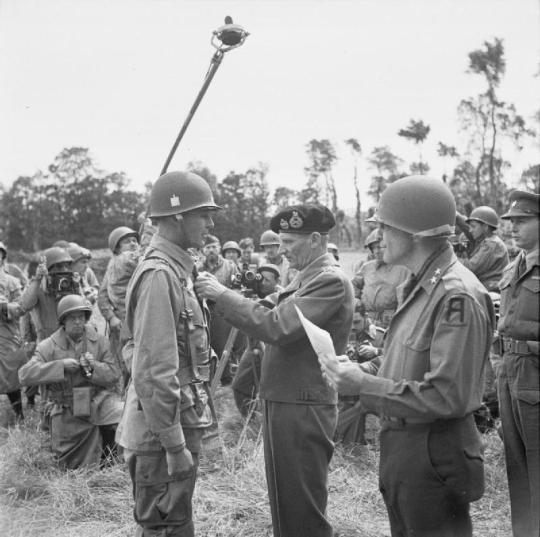
While not exclusively to blame, many of these failures were a result of Montgomery and his over-optimistic ideas and his arrogance. The failure of Operation Market Garden was largely the result of the poor leadership and tactics of General Montgomery. Monty admitted his mistake – the only time a senior Allied commander acknowledged a failure – but still claimed the operation was “90% successful”.
No one can say for sure who coined the phrase “a bridge too far” but it would have been more accurate to say Operation Market Garden was “too far from the bridge”.
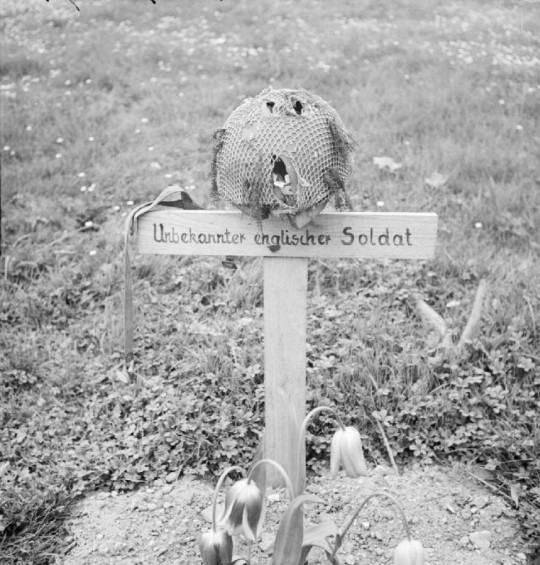
#operation market garden#market gaden#world war two#war#military history#history#montgomery#britain#america#europe#germany#netherlands#army#airborne
36 notes
·
View notes